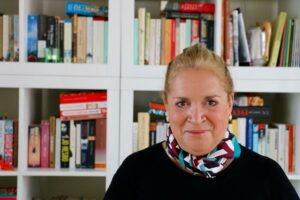Advice for Employers and Recruiters
What’s the difference between diversity and inclusion?
We hear the words diversity and inclusion often and might think they are one and the same. While they do go together, diversity and inclusion each have their own meanings. Understanding the difference helps job seekers decide the type of company to work for and helps employers build a more open-minded culture. In today’s article, Joan Kingsley discusses what is the difference between diversity and inclusion.
Diversity:
Diversity: the art of thinking independently together.
– Malcolm Forbes

Joan Kingsley
A diverse workplace is one that employs people from a wide range of cultures and backgrounds. It also includes a fair mix of race, gender, age, ethnicity, education, socio-economic groups, abilities, religious beliefs, political associations, and sexual orientation. The advantage of diversity is that the organization, including its departments and teams, is not subject to ‘group-think’; the organization makes decisions based on a broad range of information from a variety of sectors and from different kinds of people. Additionally, the diverse organization does not have an agenda and is open to learning from people within and externally.
Organizations that pursue diversity are appealing to a workforce from all sectors of society. Diverse organizations engage in ‘double-loop learning’ incorporating adaptation and learning from mistakes, rather than ‘single-loop learning’ where organizations keep doing the same things over and over again without recognizing or learning from the errors of their ways.
Inclusion:
I speak to everyone in the same way, whether he is the garbage man or the president of the university.
– Albert Einstein
An inclusive workplace treats all employees with dignity and respect. All individuals are valued regardless of talents or skills. Equal value is placed on individuals regardless of their roles, job titles or standing in the organization. In an inclusive workplace there are policies in place for equality, human rights, and the welfare of employees; policies include fair recruitment and procurement. There is zero tolerance for favoritism, cliques and segregated groups based on hierarchical standing. Biases and prejudices are identified and addressed in an open and honest way.
Inclusive organizations encourage the exposure of pockets of fear, anxiety, and stress; management addresses these before they become firmly embedded in the culture.
In an inclusive organization there is open communication about values. Expectations are clearly stated, and the rule base is set forth with clarity.
Author bio:
Joan Kingsley is the author of The Fear-Free Organization: Vital Insights From Neuroscience to Transform Your Business Culture. She is a Consultant Clinical and Organizational Psychotherapist.
New Job Postings
Advanced Search